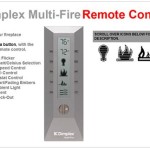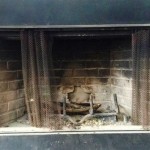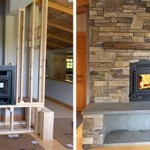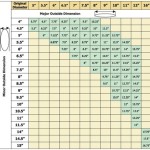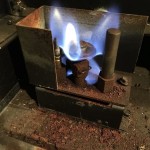Converting a Wood-Burning Fireplace to Propane Gas
The charm and warmth of a traditional wood-burning fireplace are undeniable. However, the hassle of gathering, storing, and burning wood can be a significant drawback. If you're seeking a more convenient and efficient heating solution, converting your fireplace to propane gas offers a compelling alternative. Propane gas fireplaces provide a clean, efficient flame with the added benefit of convenience and reduced maintenance.
Advantages of Converting to Propane Gas
Converting your fireplace to propane gas brings several advantages over traditional wood-burning fireplaces:
- Convenience: Propane gas fireplaces eliminate the need for chopping, storing, and hauling wood. With a simple flip of a switch, you can enjoy a cozy fire anytime.
- Clean Burning: Propane gas burns cleaner than wood, producing fewer emissions and less ash. This results in a healthier indoor environment, especially for individuals with respiratory sensitivities.
- Efficiency: Propane gas fireplaces offer greater heating efficiency compared to wood-burning fireplaces. The flames are more consistent and controllable, maximizing heat output while minimizing wasted energy.
- Safety: Propane gas fireplaces are inherently safer than wood-burning fireplaces. Properly installed and maintained models minimize the risk of sparks, embers, and creosote buildup, contributing to a safer home environment.
The Conversion Process
Converting your wood-burning fireplace to propane gas requires a professional installation. The process typically involves the following steps:
- Inspection and Assessment: A qualified gas fitter will inspect your existing fireplace to determine its suitability for conversion. This includes assessing the fireplace's structure, lining, and ventilation.
- Installation of Gas Lines: New gas lines will be installed to connect the fireplace to your propane tank. This includes running gas lines from the tank to the fireplace and ensuring proper venting.
- Fireplace Insert Installation: A propane gas fireplace insert is then installed within the existing fireplace opening. These inserts are equipped with a burner system, logs, and a safety control system.
- Testing and Certification: Once installed, the propane gas fireplace will be tested to ensure it operates safely and efficiently. The installer will also provide you with instructions for the operation and maintenance of your new fireplace.
Considerations Before Converting
Before undertaking the conversion, some key considerations include:
- Fireplace Size and Design: Ensure your fireplace is suitable for a propane gas conversion. Some fireplace types may not be compatible, such as those with open hearths or inadequate ventilation.
- Gas Line Installation: Consider the location of your propane tank and the potential need to run gas lines. The cost of gas line installation may vary depending on the distance and complexity of the project.
- Permits and Inspections: Local building codes and regulations may require permits for gas line installation and fireplace conversions. Ensure you comply with all relevant requirements.
Converting a wood-burning fireplace to propane gas presents a practical and efficient solution for homeowners seeking the convenience and benefits of gas-powered heating. With proper planning and professional installation, you can enjoy the ambience of a fireplace with the added ease and comfort of propane gas.

Convert Your Wood Burning Fireplace To Propane Ny

Can A Wood Burning Fireplace Be Converted To Gas The Flame Company

Convert From Wood To Gas With A Insert The Kernel Burner

Convert Your Wood Or Gas Fireplace Fuel Type Conversions

Wood To Gas Fireplace Conversion In Wisconsin Free Quote Badgerland Waesha

Convert Wood Burning Fireplace To Propane North Ina

Convert From Wood To Gas With A Insert The Kernel Burner

How To Convert A Wood Fireplace Propane

Convert A Wood Fireplace To Gas Full Service Chimney

Best Gas Fireplace Inserts Fireplaces Direct Learning Center
Related Posts

